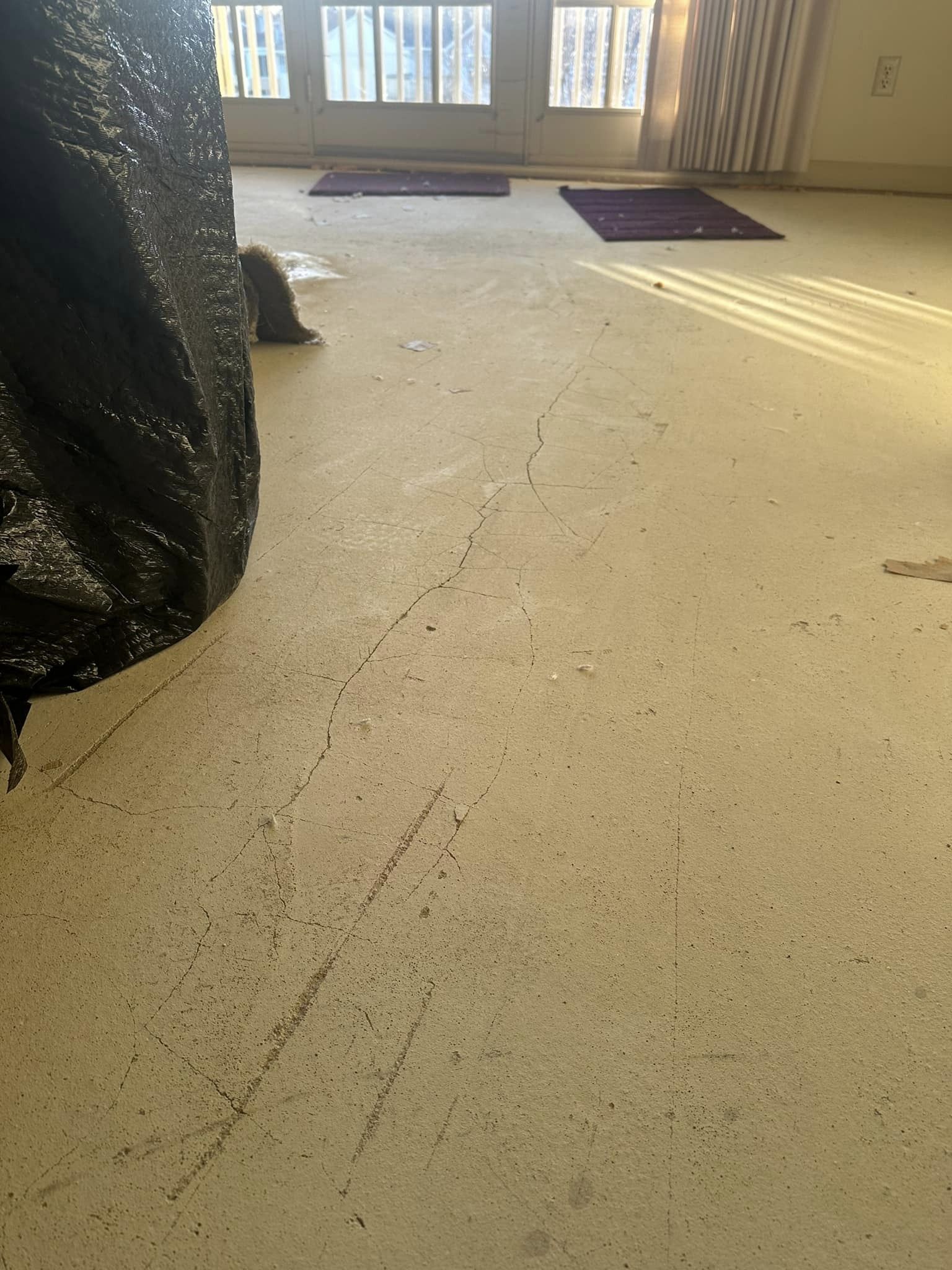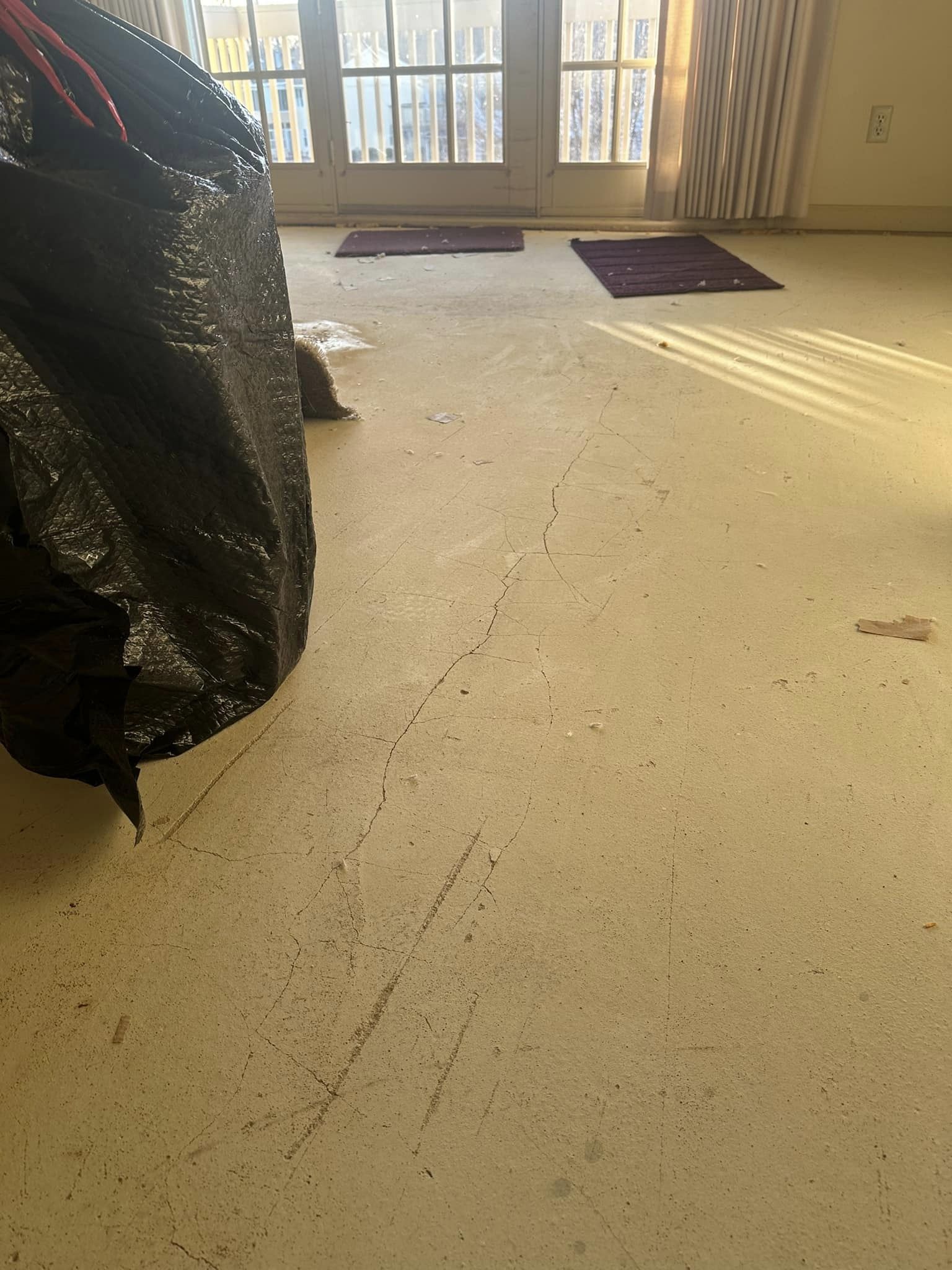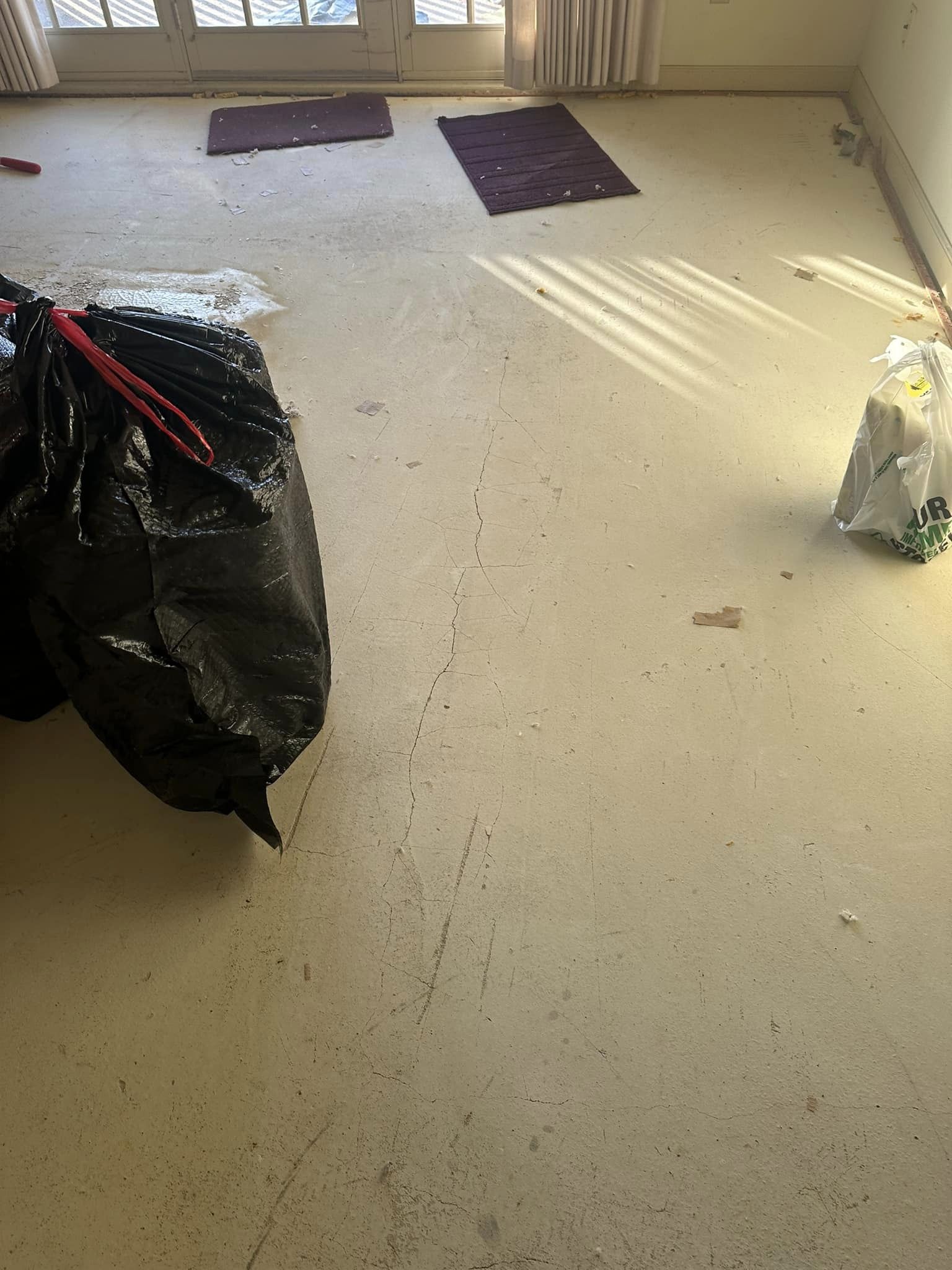How can I prepare the floor to prevent visible cracks when installing LVP after removing carpet?
1 year ago
Last Updated: May 16, 2024
What’s your usual process before installing LVP on the floor? I noticed some cracks after pulling up an old carpet.



The cracks seem small enough to go ahead and install the lvp directly over them.
Make sure to confirm with the product you plan to install about the level/flat tolerance, prime and pour self leveler if needed, and use floor patch to Feather out similar to drywall mud at the self leveler’s edge.
Can you tell me what material that is?
Seems to be gypsum
Honestly, I’m clueless. I’ve never attempted any repairs before, and now I’m renovating a condo. I was expecting to uncover wood flooring beneath the carpet I pulled up, but instead, I found this 🤦♂️
I have no clue what this is! I’ve never done any fixing up before, and now I’m updating a condo. I was expecting to find wood under the carpet I removed, but instead I found this 🤦♂️.
Resembles particle board… If it were me, I’d go with an LVP underlayment for that condo!
Isn’t coming.
Is this the basement?
Hey, , the condo is on the second floor
Hmm, that’s interesting. It resembles concrete in some ways.
Is this floor made of concrete? Is it in a basement that’s already finished, or is it a house with a concrete slab foundation?
Hey , I’m not sure what this is either 🤦♂️. This is a second floor condo.
Alright, so this material is a type of concrete consisting of cement, lightweight aggregate, and foam. It is typically applied to the floor for sound insulation and is about one to one and a half inches thick. It seems like those cracks are not a big concern, but you may want to check with a straight edge to ensure they are somewhat level. In case you need to level any areas, you can use a self-leveling flooring underlayment such as the Ardex mentioned by Jeff.
Should Michael use the Ardex just to repair the hairline cracks or cover the entire 1350sqft floor?
If the floor is level, you can simply clean it up and lay down the LVP. If there are any uneven spots, use the Ardex to smooth them out.
It appears to be particle board underlayment. There also seems to be a depression present.
What lies beneath the floor? Does it feel soft? If the foundation is solid and there is only a minor depression, you could consider using a self-leveler (such as Ardex Feather Finish) to level it out. If the surface is flat, your LVP should be suitable for covering the small cracks.
I believe it’s a solid choice, according to .
It seems to me that this is gypcrete. Once it starts to crack and crumble, it will likely just keep deteriorating. I wouldn’t be surprised if you can easily pull out some of the smaller pieces in the photos or if it feels loose when pressure is applied.
I also believe that’s what it is, .
Make sure to check for squeaks and nail small cracks before applying a quick coat of floor leveler and then continue
It’s going to be wild, . That’s a 1350sqft. How many bags of self-leveling do you think I’ll need?
It has a hollow core
Is Mark on the 2nd floor?
Usually precast planks do not crack when used, but they are not commonly utilized in residential environments either.
Prefers to use precast planks for any floor, although they are not commonly used in residential settings. Concrete floors are typically poured on delta rib steel pans for commercial purposes, but there is a time and place for everything.
This condominium was constructed in 1987. So, it’s still relatively young, right?
I concur that the appearance of the exposed floor in the author’s photos doesn’t seem to be precast or a topping that was applied on precast.
It’s totally normal to see those cracks. If the floor is even, you can go ahead and lay down the LVP directly.
If there are some small bumps, it’s a good idea to put foam down on the concrete before installing the LVP. If the floor is really uneven, which I don’t think is the case based on the pictures, then you’ll need to use self-leveling mortar first
Thank God, is feeling leveled after completing a task he had never done before.